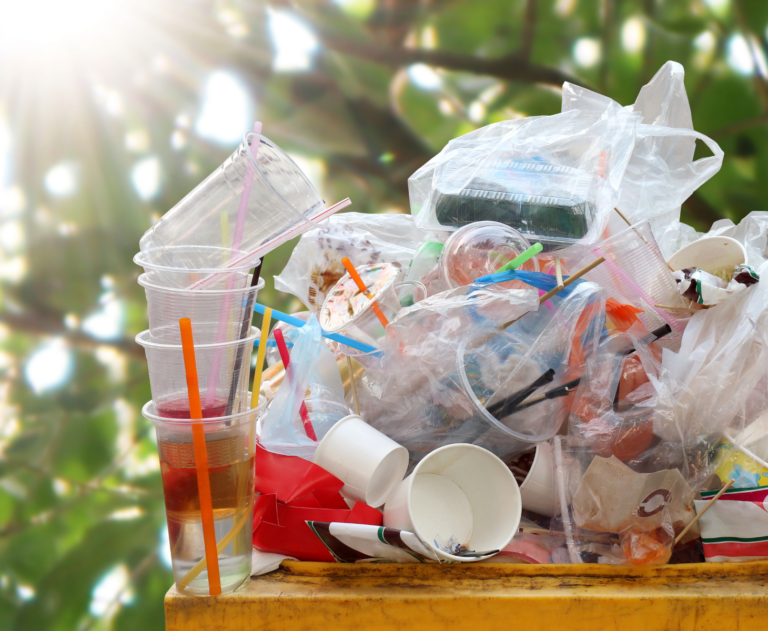Waste management is a critical global concern, as contamination of waste bins can drastically hinder recycling efforts. In Australia, where environmental consciousness is on the rise, effective waste management practices in the workplace is becoming increasingly important.
One of the most significant challenges in waste disposal is keeping bins contamination free. Research conducted by the Commonwealth Scientific and Industrial Research Organisation (CSIRO) highlights that contamination rates in recycling bins across Australia can range from 5% to as high as 20%. Contamination occurs when non-recyclable or improperly sorted items are mixed with recyclable or compostable materials, making them unsuitable for processing.
Despite clear labelling and informational campaigns about proper waste segregation, contamination remains a persistent issue. If food scraps, plastic bags, and containers with food residues are placed in the recycling bin alongside bottles and cans, they can contaminate the recycling stream, resulting in the entire batch being diverted to landfill.
Understanding the reasons and behaviours behind contamination, such as confusion over recycling guidelines or lack of convenient disposal options, is crucial in developing targeted interventions. In addition, investing in technologies like smart bins equipped with sensors can aid in real-time contamination detection, enabling prompt corrective action. Here are some best practices to keep bins contamination free.
Proper Segregation
Ensuring proper waste segregation is crucial for maintaining a clean and sustainable environment within your workplace. According to the Waster Service, on average, recycling contamination rates stand at 25 percent, indicating that 1 out of every 4 items is contaminated.
To avoid contamination, it’s essential to clearly label bins for various types of waste, including recyclables, general waste, organic waste, and hazardous materials. Clear labelling allows you to streamline the disposal process while reducing the risk of contamination.
Educating employees about the importance of waste segregation through a comprehensive training session can also help them understand why proper disposal is important.
Clear Signage and Labelling
According to a survey conducted by the Beverage Industry Environment Council, nearly half of littering occurs because of disinterest or the absence of clearly labelled bins.
By providing clearly labelled recycling and garbage bins in workplaces, improper waste disposal can be significantly reduced. According to research from the University of Melbourne, visible signage on bins increases recycling rates significantly, with just over 10% of recyclables ending up in landfills compared to 25% when labels are unclear.
For businesses, it’s important to implement clear and concise bin signage throughout their premises, ensuring consistent messaging to prevent contamination and enhance waste sorting efforts.
The Colour-Coding of Bins
The bin colour-coding system in Australia is designed to streamline waste management both in households and workplaces. It employs distinct colour combinations to represent different types of waste or materials for disposal. The most common bins are:
- General Waste: Bins are characterised by a dark green or black body with a red lid.
- Mixed (Commingled) Recycling (including glass, plastic, metal, and paper): Bins typically feature a dark green or black body with a yellow lid.
- Green Waste/Organics: Bins are usually dark green or black with a lime green lid.
- Paper and Cardboard Recycling: Bins typically have a dark green or black body with a blue lid.
Regular Waste Audits
Organisations can implement a systematic inspection schedule to ensure proper waste management practices are followed. These audits can directly contribute to environmental sustainability and cost savings.
Designate responsible staff members to conduct thorough bin inspections, sorting through contents to separate recyclables, organic waste, and non-recyclable materials. They can also inspect the bins for any leaks, spills, or damage to ensure they are in good working order and ready for use. These inspections can provide an opportunity to educate employees on proper waste disposal procedures and encourage them to correctly segregate their waste.
By analysing the findings of waste audits, businesses can develop tailored action plans to address contamination issues.
Educational Campaigns
Launch a comprehensive educational drive to boost awareness among staff regarding the critical significance of waste management and the prevention of contamination. You can use a variety of mediums such as eye-catching posters, informative email newsletters, and engaging training sessions, to equip employees with the knowledge they need.
Waste management education campaigns should cover essential topics including correct waste disposal techniques, clear recycling guidelines, and the far-reaching consequences of contamination on our environment and community.
Use of Liners and Bin Covers/Lids
By incorporating liners and bin covers/lids into waste management protocols, businesses can effectively reduce the risk of contamination, maintain a sanitary work environment, and comply with health and safety regulations.
To contain trash and make disposal easier, use liners, which are made of durable yet compostable materials. These liners act as a barrier between the waste and the bin, preventing liquids, food residue, and other contaminants from penetrating the bin and causing foul odours or unsanitary conditions.
Bin covers can help improve waste management practices by sealing off the tops of bins, preventing pests and insects from accessing waste and lowering the risk of spills or leaks. Also, scheduling regular cleaning and disinfection of waste bins can maintain hygiene and prevent the buildup of bacteria and odours.
Collaborate with Waste Management Providers
Research conducted by the Waste Management Association of Australia (WMAA) underscores the significance of proper waste disposal practices in workplaces, as contaminated waste bins pose health hazards and can lead to increased costs for waste disposal and potential environmental harm.
Partnering with waste management service providers such as Method Recycling can revolutionise waste management through AI-based solutions, diverting significant quantities of waste from landfills. Implementing AI technology in waste management allows for the optimisation of collection schedules and ensures the proper disposal of segregated waste streams.
By partnering with Source Separation Systems, your business can contribute to a more sustainable future as the bins are made from 100% post-consumer recycled content. Seeking guidance from industry experts enables businesses to implement best practices and stay abreast of emerging trends and regulations, thus fostering continuous improvement.

